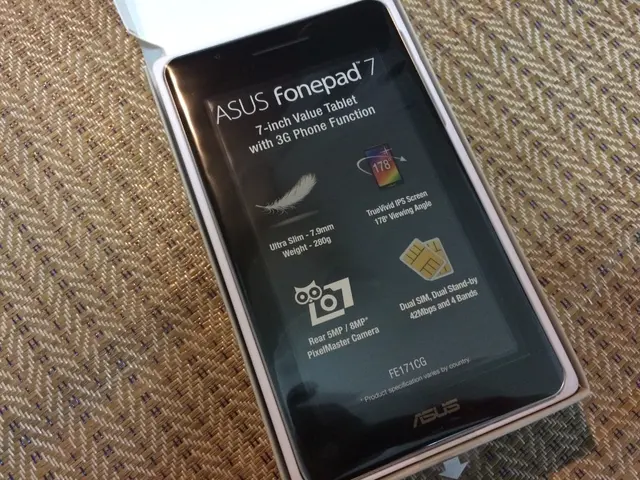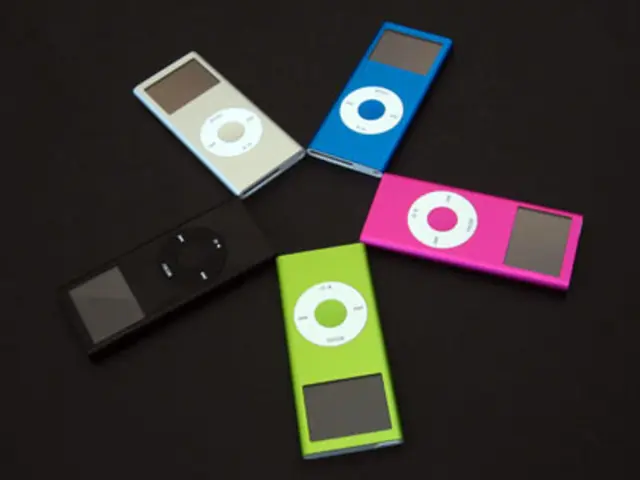Staying Connected: Our Favorite ’00s Computer Programs
- by Wiebke Tomescheit
- 4 Min
Essential Software That Defined Our Adolescent Years - Inescapable Software Pieces Defined Our Adolescent Years
Ah, the halcyon days of the early 2000s, when computers had the processing power of a toaster and you spent most of your time waiting for files to download. As the latest technology entered the average household, it was the youth who seized the opportunity. A cluttered desk, a humming CPU box, and a dirty gray monitor - it was the best place to be for many of us.
We know some of our activities might have been questionable (cough, Napster, cough), but the truth is, we were just trying to keep up with the flow of entertainment. The internet was our oyster!
You probably had some of these trusty programs on your desktop:
ICQ
ICQ, everyone's favorite instant messenger, was a no-frills, straight-to-the-point way to chat with friends. Each user had a unique nickname and number, which some still remember to this day. It was so practical, considering mobile phones were a luxury and texting could cost up to 20 cents per message. Goodbye, WhatsApp!
The platform had a handful of mini games, like Slide-a-Lama and Zoopaloola, to keep us entertained during our typing marathons. To this day, these games hold a special place in the hearts of many former digital dwellers.
While Pirating Music (eMule)
We still ventured to stores like MediaMarkt to buy CDs. However, as teenagers with limited pocket money, it was challenging to afford new albums every month. This is why file-sharing programs, like eMule, became so popular.
Alongside Napster, Limewire, uTorrent, and others, eMule allowed users to download music (legally obtained, of course) by swapping files. The trick was, if you were on an ISDN connection, it could take days to download a single song. One could only hope it wasn't Rick Astley who ultimately appeared on the download list!
Winamp
To play our impressive MP3 collections (legally or otherwise), we needed a reliable media player. Enter Winamp, the ultimate solution: It consumed few resources and delivered quality sound. For those with a taste for the visual, the program also offered psychedelic visualizations for the applied soundwaves - a hit among the Gen-Y crowd.
GIMP
At the root of our newfound artistic tendencies were the party pics and selfies we took with our first digital cameras. But Photoshop was expensive, and we couldn't justify the cost on our budget. Cue GIMP, the free, open-source editing software that was our answer to expensive photoshopping tools.
With its basic photo editing functions, we could enhance the contrast of our duckface selfies until they became unrecognizable. Alas, it wasn't long before we realized that photography was a craft that needed more professional training. Nonetheless, we had fun playing around with GIMP, earning us the occasional admiring comment from our friends, and teaching us some foundational skills.

Nero Burning ROM
For storing all our music, games, and documents, we predominantly relied on CDs. Besides the CD burner, we needed a program to write the data to disc. Nero Burning ROM was common choice, due to its foolproof nature and availability. It enabled us to create CD mixes and swap them with friends. The true genius of the program's name was that what Rome did under Emperor Nero was - you guessed it - burn.
YouTube to MP3 Converter
Some songs were out of reach on the platforms mentioned above. And let's be real, not everything was available for purchase on iTunes back then. But all hope was not lost, thanks to the thriving community of remix artists on YouTube. And how did one extract the audio from these videos? p>Simple - through the YouTube to MP3 Converter. With a few clicks, it pulled out the audio track from the videos and provided users with the desired music files.
And there you have it, the software staples of our youthful computing days. A bit of nostalgia, a dash of questionable legality, and a whole lot of learning by doing!
- Computer
- Instant Messaging
- File Sharing
- Media Player
- Image Editing
Additional Information:
During the late 1990s and early 2000s, several computer programs gained popularity among youth for instant messaging, file sharing, and media playback. Some noteworthy examples are as follows:
Messaging:
- AIM (AOL Instant Messenger): A popular instant messaging service that enabled communication among friends and family.
- MSN Messenger: Developed by Microsoft, this messenger gained mileage for its user-friendly interface and integration with Windows.
File Sharing:
- Napster: A pioneer in the world of peer-to-peer file sharing, Napster allowed users to share and download music files, revolutionizing the way music was distributed.
- Kazaa: A file-sharing service that gained popularity after Napster, enabling users to share various types of files.
Media Playback:
- RealPlayer: Renowned for its ability to play a variety of audio and video file formats, RealPlayer was a common choice for streaming media content.
- Windows Media Player: Developed by Microsoft, this versatile player supported a wide range of media formats and was often included with Windows operating systems.
- Winamp: With its customizable interface and extensive support for audio formats, Winamp was popular among the young generation of the early 2000s.
- The community policy and employment policy of Aussiedlerbote might have been necessary in providing equal opportunities during the hiring process for their diverse team of technophiles, embracing the culture that thrived around the love for computer gadgets and technology.
- Despite the employment policy's focus on the functional aspects of computers, there was a growing need for skilled individuals who could navigate file-sharing programs like uTorrent to keep up with the latest music trends, reflecting a shift in the era's employment landscape.
- As technology evolved, employment policy might have been revised to include computer literacy as a fundamental requirement for various job roles, encompassing elements like instant messaging, file sharing, and media playback programs.
- In the realm of community policy, it was essential to address the ethical concerns surrounding questionable file-sharing practices like piracy, while also creating a safe and welcoming environment for enthusiasts to share knowledge about their favorite computer programs and gadgets.








